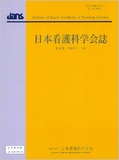Japanese
English
- 販売していません
- Abstract 文献概要
- 参考文献 Reference
要旨
目的:健康教育イベント参加者の1か月後の身体活動状況と健康関連QOLの変化を明らかにする.
方法:成人期の一般市民を対象に,身体指標の測定結果を基に身体活動活発化動機づけツールを用いてアクションプランを立案する健康教育イベントを開催した.評価指標は国際標準化身体活動質問票(IPAQ)日本語版,健康関連QOL(SF-12®)とし,Wilcoxonの符号付順位検定を行った.
結果:有効回答は202名(73.6%)であった.アクションプランは身体活動と食事に関する内容に大別できた.1か月後のアクションプラン実施者は161名(79.7%)であり,歩行の活動量,1日の活動量が有意に増加した.健康関連QOLは標準値内であり大きな変化は認めなかった.
結論:動機づけツールを用いた参加型の介入により,個別にアクションプランを立案することが,身体活動活発化のきっかけになることが明らかになった.
Purpose: This study aimed to examine the change in physical activities and health-related quality of life (QOL) of persons one month after they attended a health education event.
Method: We held a health education event for adults from the general public. Based on the measurements of physical parameters we developed an action plan that included the use of a tool that promotes physical activities. The Japanese version of health-related QOL (SF-12®) of the International Physical Activity Questionnaire (IPAQ) was employed for the valuation index and the Wilcoxon signed rank test was performed.
Results: The number of valid responses was 202 (73.6%). One month later, 161 participants (79.7%) had implemented the action plan, which covered physical activities and diet. The walking and daily activities in the action plan group had increased significantly. However, the health-related QOL was within the standard values and had not changed significantly.
Conclusion: It is concluded that participatory interventions using individually devised action plans that include motivational tools can mobilize physical activities among individuals.
Copyright © 2022, Japan Academy of Nursing Science. All rights reserved.


